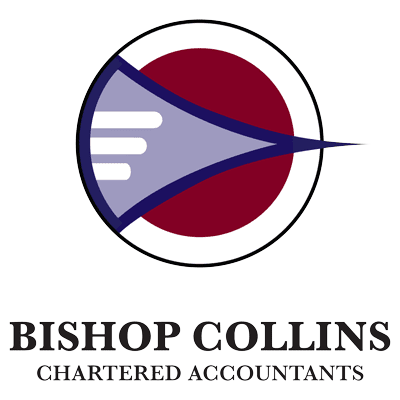The importance of Cash Flow Management
“Entrepreneurs believe that profit is what matters most in a new enterprise. but profit is secondary. Cash flow matters most.” – Peter Drucker
“Never take your eyes off the cash flow because it is the life blood of business.” – Richard branson
“You don’t bank profits you bank cash flow” – Someone Somewhere
Alright, that’s enough of the festival of quotes. I think you get the message! but they serve a point – to highlight that one of the main reasons businesses fail is due to cash flow. The current bank failures in the US are a real life modern example of this principle that cash flow management is essential. bank depositors were withdrawing their funds, due to concerns of the bank’s stability. This created a cash crunch in the banks who were forced to realise losses and sell assets.
Cash flow can result from business operations, investment activities or structural changes to the balance sheet. So we need to look at both revenue, expenses, use of assets and liabilities to ensure cash flow management and cash flow forecasting.
 Our Top Tips to Effectively Manage Small business Cash Flow
Our Top Tips to Effectively Manage Small business Cash Flow
1. Create a Cash Flow Forecast
Develop a detailed cash flow forecast that outlines your expected income and expenses for a specific period, typically on a monthly or quarterly basis. This will help you anticipate cash shortfalls or surpluses and take proactive measures such as obtaining short term funding or making payment arrangements in advance from some or all your suppliers during tight periods of cash flow.
2. Monitor and Track Your Cash Flow Regularly
This is achieved by having a good accounting system that you use to help you track your activities. Speak to your accountants to determine which programs are best for you and stay on top of your cash flow by monitoring it regularly, at least monthly. Review your cash flow statement and compare it to your forecast. This will enable you to identify any discrepancies or potential issues early on.
3. Accelerate Cash Inflows
Implement strategies to speed up your cash inflows. Consider offering discounts for early payments or incentives for customers who pay upfront. Send out invoices promptly and follow up on any late payments.
4. Control Your Cash Outflows
Keep a close eye on your expenses and control them effectively. Regularly at least annually negotiate improved payment terms with suppliers, explore opportunities to reduce overhead costs, and eliminate unnecessary expenses. Over time expenses can accumulate as they were spent last year, and the habit is to continue rather than review and assess if they are necessary this year. Examples can include:
- Marketing costs for goods or services that are being or already wound down
- Supplies no longer needed in the same quantity
- Staff no longer adding value due to changes in structure
 5. Maintain a Cash Reserve
5. Maintain a Cash Reserve
Establish an emergency fund or cash reserve to handle unexpected expenses or periods of low cash flow. Aim to set aside a percentage of your revenue each month to build up this reserve.
6. Improve Your Inventory Management
Avoid tying up excessive amounts of cash in inventory. Optimise your inventory levels by forecasting demand accurately, negotiating favourable terms with suppliers, and regularly reviewing and adjusting your inventory orders.
A good benchmark to achieve is to get your inventory turnover the same or less than your supplier payment terms. This means you are selling your stock every 1-2 months and paying your suppliers in the same period. The result is that your suppliers effectively become your bank without the interest cost.
7. Negotiate Payment Terms with Suppliers
Work with your suppliers to negotiate favourable payment terms. Request extended payment periods or explore vendor financing options that allow you to preserve cash flow while still fulfilling your obligations. Review bulk buying or setting volume targets with rebates once achieved as they can improve cash flow and something suppliers appreciate, so everyone benefits.
8. Manage Your Accounts Receivable
“The squeakiest wheel gets the most attention”. We all know that those businesses that chase up late payments get the most attention. Stay proactive in collecting payments from your customers. Set clear payment terms and policies, send timely reminders for overdue invoices, and consider implementing a consistent system for following up on late payments.
Most importantly it is the relationship with the right person that needs to be developed. being consistent, courteous and persistent will work wonders and a little thank you goes a long way.
9. Explore Financing Options
In situations where cash flow is tight, consider exploring financing options such as short-term loans, lines of credit, or invoice factoring. However, carefully evaluate the costs and risks associated with these options before proceeding as they can sometimes not be worth the time or risk to manage.
10. Regularly Review and Adjust Your Cash Flow Forecast
As your business evolves, make sure to regularly review and update your cash flow forecast. Adjust your projections based on new information, changes in market conditions, or shifts in your business strategy.
 Bishop Collins Know Cash Flow
Bishop Collins Know Cash Flow
Keeping up to date on your numbers and regularly reviewing them must be on the top of any business owners or Director’s list of priorities. If your accountant does not provide you with this service offering please reach out to bishop Collins for any assistance you may require.
Bishop Collins Know Cash Flow Accountants can provide valuable assistance with cash flow management and cash flow forecasting to help ensure your small business thrives. Get in touch with us today to learn more about our services and how we can assist you with your cash flow requirements.





 Our Top Tips to Effectively Manage Small business Cash Flow
Our Top Tips to Effectively Manage Small business Cash Flow 5. Maintain a Cash Reserve
5. Maintain a Cash Reserve Bishop Collins Know Cash Flow
Bishop Collins Know Cash Flow